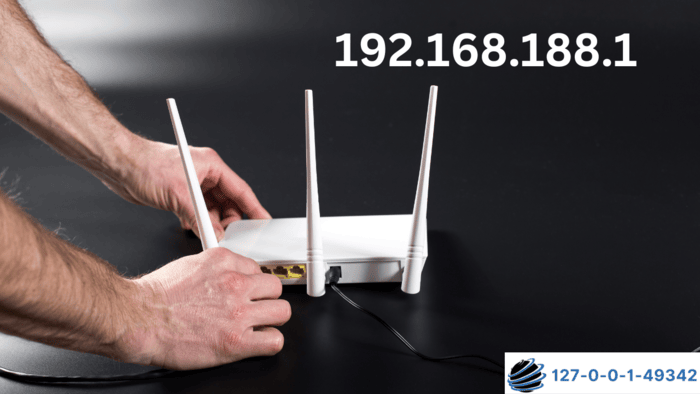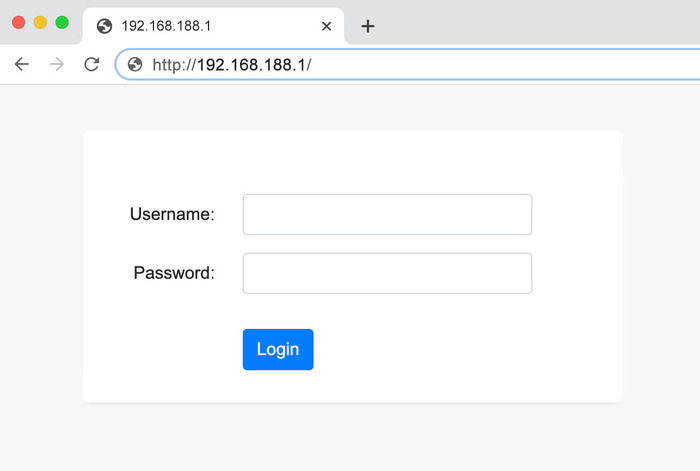The private IP address 192.168.188.1 lets you access and manage your router or modem settings. By typing http://192.168.188.1 into your browser, you can make essential changes to your network configuration.
These include updating your WiFi password, renaming your Network Name (SSID) for better identification, and modifying default settings for improved security and performance.
Connect your device to the router’s network. Launch a browser and type the IP address. Use the login details from the router’s manufacturer to sign in.
The default username and password are usually printed on the router or in a manual. Replace the default login details with a strong and unique combination for enhanced security.
Using 192.168.188.1, you can configure advanced settings like firmware updates, network type adjustments, and troubleshooting tools. These options allow you to optimize your network for faster speeds and reliability.
Regularly checking and updating your router settings ensures your network remains secure and functions smoothly.
Whether for personal or professional use, managing these settings with 192.168.188.1 keeps your internet connection safe and efficient.

Accessing 192.168.188.1
Follow these steps to log in to your router:
- Launch a web browser on your device.
- Enter http://192.168.188.1 in the address bar and hit Enter.
- Provide the Username and Password on the login screen.
- Press the Login button to access the router’s settings.
- Start managing your router’s configuration after a successful login.
Find the Default Login Details

Check the sticker on the back or bottom of your router for the default IP address, Username, and Password. These details usually come with the router for first-time setup.
If the sticker is missing, look in your device’s user manual or documentation.
Tips for Managing Your Router
- Reset the router if the default credentials don’t work. Use a small pin to press and hold the reset button for a few seconds until the router restarts.
- Update the default Username and Password immediately after logging in to enhance network security.
- Keep your new credentials written down securely to avoid losing access.
These steps and tips make it easy to manage your router’s settings using 192.168.188.1. Always ensure your network remains secure by changing default settings.
| Username | Password |
| admin | password |
| admin | admin |
| admin | 1234 |
| admin | (blank) |
How to Update Your Wi-Fi Network Name and Password
Improving your Wi-Fi security and making your network easily identifiable requires updating its name and password. Follow these reorganized steps to make the changes:
- Log In to Your Router Settings
Open a web browser on your device and type your router’s IP address (commonly 192.168.0.1 or 192.168.1.1). Enter your admin username and password to access the router’s control panel. - Locate Wireless Settings
Log in and go to “Wireless Settings” or “Wi-Fi Settings.” You will usually see it on the dashboard or in advanced options. - Edit Network Name (SSID)
Look for the field labeled “Network Name” or “SSID.” Enter a new name for your Wi-Fi network. Ensure it is unique and easily identified, especially when managing multiple networks. - Set a Strong Password
Find the password field, which may be labeled “Wi-Fi Password,” “Pre-Shared Key,” or “Passphrase.” Enter a secure password with letters, numbers, and symbols. - Configure Both Bands (If Dual-Band Router)
If your router supports 2.4 GHz and 5 GHz bands, update the settings for both networks individually. Navigate between tabs or settings for each band. - Save and Apply Changes
Click the “Save” or “Apply” button to finalize your updates. The router may restart, temporarily disconnecting your devices from the network. - Reconnect Devices
Use the new network name and password to reconnect all your devices.
Regularly updating your network name and password enhances security and ensures better control over your Wi-Fi access. Always store your credentials safely for easy reference.
